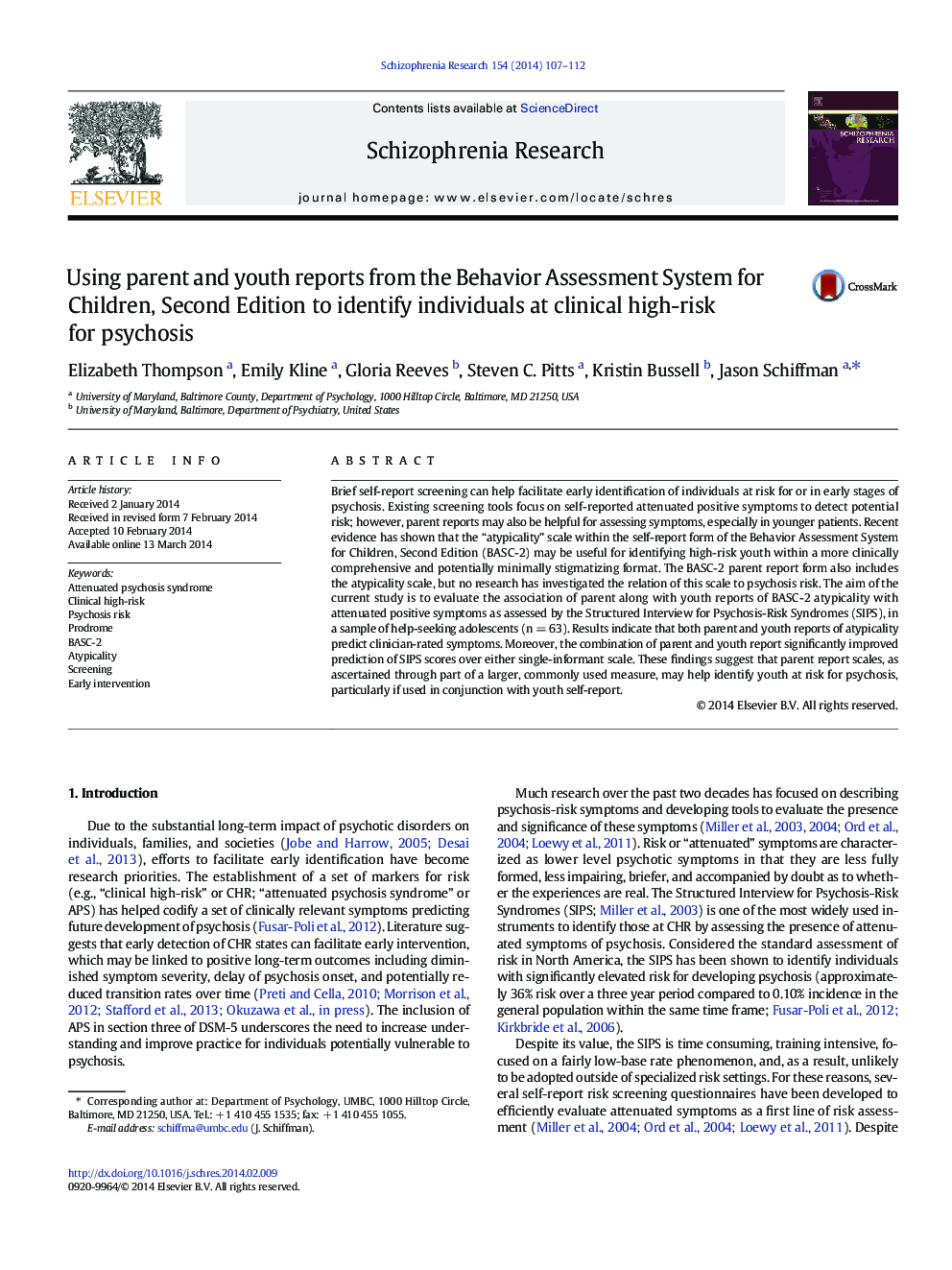| Article ID | Journal | Published Year | Pages | File Type |
|---|---|---|---|---|
| 6825422 | Schizophrenia Research | 2014 | 6 Pages |
Abstract
Brief self-report screening can help facilitate early identification of individuals at risk for or in early stages of psychosis. Existing screening tools focus on self-reported attenuated positive symptoms to detect potential risk; however, parent reports may also be helpful for assessing symptoms, especially in younger patients. Recent evidence has shown that the “atypicality” scale within the self-report form of the Behavior Assessment System for Children, Second Edition (BASC-2) may be useful for identifying high-risk youth within a more clinically comprehensive and potentially minimally stigmatizing format. The BASC-2 parent report form also includes the atypicality scale, but no research has investigated the relation of this scale to psychosis risk. The aim of the current study is to evaluate the association of parent along with youth reports of BASC-2 atypicality with attenuated positive symptoms as assessed by the Structured Interview for Psychosis-Risk Syndromes (SIPS), in a sample of help-seeking adolescents (n = 63). Results indicate that both parent and youth reports of atypicality predict clinician-rated symptoms. Moreover, the combination of parent and youth report significantly improved prediction of SIPS scores over either single-informant scale. These findings suggest that parent report scales, as ascertained through part of a larger, commonly used measure, may help identify youth at risk for psychosis, particularly if used in conjunction with youth self-report.
Keywords
Related Topics
Life Sciences
Neuroscience
Behavioral Neuroscience
Authors
Elizabeth Thompson, Emily Kline, Gloria Reeves, Steven C. Pitts, Kristin Bussell, Jason Schiffman,
